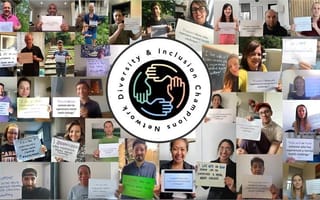Creating spaces of equity for everyone in the workplace is long overdue.
While many tech companies were built to improve connections between people, an organization’s mission can get lost in practice or in a lack of peer understanding. That’s when certain groups can feel left behind, or worse — excluded altogether, especially if an employee’s identity transcends more than just one diverse background. If an organization celebrates Black History Month but is rather quiet around Pride Month, an individual who belongs to both the Black and LGBTQ+ communities may only feel like one part of them is being seen or accepted. That’s why fostering a culture of belonging for everyone begins with fully comprehending the way a person’s identities can overlap.
“Seeking out and encouraging these differences is core to our philosophy,” Maurice Ducoing, vice president of people and change at Litera Microsystems, said. “But it is also about belonging; about creating psychological safety for employees.”
To gain a sense of the current DEI intersectionality landscape within the local tech scene, Built In Chicago asked Ducoing to break down what their organization is doing to create a more inclusive workspace, and every step that led them to bring about meaningful change.
How does your company approach intersectionality in the workplace – particularly the intersection of race and other identities, such as sexual orientation, gender or parental status – and how does that help shape your broader DEI initiatives?
Litera is keenly aware of the complex and unique identities of its people. Seeking out and encouraging these differences is core to our philosophy. After all, each identity delivers a new perspective, allowing us to take advantage of a complex diversity of thought and experience, which leads directly to better problem solving and productivity. But it is also about belonging; about creating psychological safety for employees on the one hand, and reminding each of us that while we may be in positions of power in certain ways, we need and depend on others when other aspects of our identities are taken into consideration.
We have used education and instruction to directly called out the importance of intersectionality in the way we approach communications and celebrations. Further, we take great effort to measure diversity from various vantage points that take multi-layered identities into account: e.g., the role of women in our workplace and in leadership as well as women of color, further taking into account sexual orientation, gender expression, etc.
What has been the most impactful action your company has taken to create a more inclusive and equitable work environment for ALL employees, and why?
There is so much that Litera does and tries to do in this area: reviewing and revising the hiring process to be more inclusive at every stage; actively and thoughtfully removing bias from performance management via calibrations designed to create equity and fairness; creating an employee resource group that helps to drive celebration and education.
But perhaps the single most impactful action (supported by all of this real-time work) is the leadership of the CEO. This year, for Juneteenth, he emphasized the fact that the Black Lives Matter movement is not a political statement or a matter of controversy; it’s a matter of basic human decency, and it’s our stance. This type of modeling from the top goes a long way to fuel the culture of inclusivity.
Each identity delivers a new perspective, allowing us to take advantage of a complex diversity of thought and experience.”
What role do your employees play in driving DEI efforts? And what have you done to ensure even the most marginalized voices on your team are represented, heard, valued and respected?
Doors are always open to hear from employees on this topic structurally as well as through the ERG (known as the D&I Champions Network). We have conversations, take suggestions and encourage these efforts to be led by a wide range of employees (our workshops are supported and led by these very same ERG members). We don’t always get it right, of course, and sometimes we receive feedback that the message was off on some communications or that more is needed. It is an ongoing struggle – but it is one Litera is very excited to take on and does so enthusiastically.
Beyond feedback, of course, and to the initial point about intersectionality, we always seek out opportunities and feedback for and from neurodiverse candidates and employees who may not be set up for success based on some of our processes. So we rethink, seek and redo.










